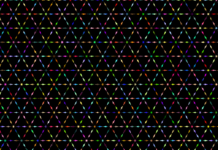DLSS (Deep Learning Super Sampling) is an innovative technology developed by NVIDIA that aims to revolutionize the way graphics are rendered in video games and other real-time applications. By leveraging the power of artificial intelligence and deep learning algorithms, DLSS delivers superior image quality while simultaneously improving performance by reducing the computational load on the GPU. DLSS has quickly gained popularity among gamers and developers alike, and its impact on the gaming industry is significant.
DLSS, DLSS, DLSS. These three letters have become synonymous with cutting-edge graphics technology. NVIDIA’s Deep Learning Super Sampling has emerged as a game-changer in the field of real-time rendering. With the constant demand for higher resolutions and more immersive visual experiences, DLSS has become a crucial tool for enhancing image quality while maintaining high performance.
So, what exactly is DLSS? DLSS is a rendering technique that utilizes artificial intelligence and deep learning algorithms to upscale lower-resolution images in real-time. It leverages the power of NVIDIA’s Tensor Cores, found in their RTX series graphics cards, to perform highly efficient computations and produce high-quality results. By employing advanced neural networks, DLSS is capable of enhancing images with remarkable precision, resulting in visuals that rival or even surpass native resolution rendering.
DLSS operates by employing two primary components: the Training Phase and the Inference Phase. During the Training Phase, NVIDIA utilizes an extensive database of high-resolution images, paired with their corresponding low-resolution counterparts, to train a deep learning model. This process involves exposing the model to numerous samples and teaching it to understand the relationship between the low-resolution and high-resolution images. NVIDIA’s supercomputers, equipped with powerful GPUs, perform the complex calculations required for training the DLSS model.
Once the training is complete, the DLSS model is ready for the Inference Phase, which takes place in real-time during gaming or other GPU-intensive applications. When a lower-resolution frame is generated by the game engine, DLSS utilizes the trained model to upscale the image to a higher resolution, enhancing its visual fidelity. The upscaling process is performed by analyzing neighboring pixels, texture details, and other features of the low-resolution image and using this information to generate a high-resolution counterpart. The result is a visually superior image that closely resembles one rendered at native resolution.
One of the key advantages of DLSS is its ability to improve performance while maintaining image quality. By employing AI-driven upscaling techniques, DLSS reduces the workload on the GPU, allowing it to render fewer pixels without sacrificing visual fidelity. This efficiency boost leads to higher frame rates, smoother gameplay, and enhanced overall performance. Gamers can now enjoy their favorite titles with more fluidity and responsiveness, even on systems that may not have been capable of running the game at higher resolutions before.
Furthermore, DLSS is not limited to resolution upscaling alone. It also addresses other common challenges in real-time rendering, such as anti-aliasing. Anti-aliasing techniques are employed to reduce jagged edges and smooth out the appearance of objects and textures. DLSS integrates anti-aliasing capabilities, making it a comprehensive solution for enhancing image quality. The combination of upscaling and anti-aliasing in a single pass greatly simplifies the rendering pipeline, resulting in more efficient and streamlined graphics processing.
DLSS, with its ability to deliver higher performance and superior image quality, has garnered significant attention from both gamers and developers. NVIDIA has been actively working with game studios to integrate DLSS into their titles, providing gamers with an immersive and visually stunning experience. The adoption of DLSS by prominent game developers and the growing list of supported games highlight its relevance and impact in the gaming industry.
Beyond gaming, DLSS has the potential to extend its benefits to other real-time applications that require high-quality visuals, such as virtual reality, architectural visualization, and medical imaging. The enhanced image quality and improved performance offered by DLSS can significantly enhance the realism and accuracy of these applications, providing users with more immersive and detailed experiences.
In addition to its practical applications, DLSS has a profound impact on the future of graphics technology. Its introduction has sparked a new era of AI-driven rendering techniques, paving the way for further advancements in the field. By harnessing the power of deep learning algorithms, DLSS demonstrates the potential of AI to revolutionize real-time graphics rendering and push the boundaries of visual fidelity.
DLSS is continuously evolving and improving through NVIDIA’s ongoing research and development efforts. With each new generation of graphics cards, NVIDIA introduces enhancements to DLSS, further refining its performance and image quality. Updates to the DLSS models, training methodologies, and optimization techniques result in even more impressive visual results and broader compatibility with a range of hardware configurations.
One of the noteworthy features introduced with DLSS 2.0 is the ability to provide temporal feedback. This means that DLSS takes advantage of temporal information from previous frames to enhance the quality of the current frame. By analyzing the movement and changes between frames, DLSS can produce sharper and more accurate images, reducing artifacts and improving overall visual fidelity.
DLSS has also expanded its support beyond gaming to include creative applications. Content creators who rely on graphics-intensive software, such as 3D modeling and rendering, video editing, and visual effects, can benefit from DLSS to accelerate their workflow and achieve high-quality results. By leveraging DLSS’s upscaling capabilities, creators can maintain interactive editing and previewing while rendering at lower resolutions, saving time and increasing productivity.
It is important to note that DLSS is not without its limitations. As with any technological advancement, there are considerations and trade-offs to be made. One of the primary concerns surrounding DLSS is the potential loss of fine details in the upscaled images. While DLSS excels at enhancing overall image quality, it may struggle with accurately reproducing intricate textures or small objects in some cases. However, NVIDIA continues to address these challenges and refine the DLSS models to mitigate these limitations.
Another consideration is the computational requirements of DLSS. Although DLSS reduces the load on the GPU by rendering at lower resolutions, it still relies on the processing power of the GPU and the dedicated Tensor Cores for the AI calculations. Older GPUs or those without Tensor Cores may not be compatible with DLSS, limiting its accessibility to a subset of users. However, as technology progresses and more affordable GPUs with Tensor Cores become available, DLSS will likely become more accessible to a wider audience.
DLSS represents a groundbreaking advancement in real-time rendering technology. By leveraging artificial intelligence and deep learning algorithms, DLSS delivers higher performance and superior image quality, making it a game-changer in the gaming industry and beyond. Its ability to upscale lower-resolution images in real-time, while maintaining or surpassing native resolution rendering, offers a significant boost to visual fidelity and performance. With ongoing research and development, DLSS continues to evolve, bringing new features and improvements that push the boundaries of what is possible in real-time graphics rendering. As DLSS becomes increasingly adopted by game developers and expands its applications to other industries, its impact on the future of graphics technology is undeniable.
Additionally, DLSS has demonstrated its potential to contribute to the advancement of virtual reality (VR) technology. VR relies on rendering high-resolution images at a high frame rate to create immersive and realistic experiences. However, the demanding nature of VR puts a strain on hardware resources. DLSS addresses this challenge by providing a significant performance boost, allowing VR applications to achieve smoother gameplay and more detailed visuals. With DLSS, VR enthusiasts can enjoy a more seamless and immersive experience without compromising on image quality.
DLSS has also found applications in architectural visualization and design. Architects and designers often rely on real-time rendering to create virtual representations of their projects. DLSS’s ability to enhance image quality and improve performance makes it a valuable tool in this field. It enables architects to showcase their designs with stunning visual fidelity, enabling clients and stakeholders to visualize projects in a more realistic and engaging manner.
Medical imaging is another area where DLSS has the potential to make a significant impact. Medical professionals heavily rely on high-quality imaging to diagnose and treat patients accurately. DLSS’s ability to enhance image quality can aid in producing clearer and more detailed medical images, allowing doctors to make more precise assessments and diagnoses. By leveraging DLSS, medical imaging technologies can improve their efficiency and provide better insights into patient conditions, ultimately leading to improved healthcare outcomes.
It is worth mentioning that DLSS is not a one-size-fits-all solution. Its effectiveness depends on various factors, such as the specific game or application, the hardware configuration, and the user’s visual preferences. Some users may prefer the native resolution rendering for its utmost fidelity, while others may find DLSS to be a valuable trade-off between performance and image quality. It is essential for users to experiment with DLSS settings and determine the optimal balance for their specific setup and preferences.
NVIDIA’s commitment to improving DLSS is evident through regular updates and advancements. The company actively collaborates with game developers to integrate DLSS into new and existing titles, expanding the roster of supported games. This collaborative approach ensures that DLSS continues to evolve and adapt to the ever-changing landscape of gaming and real-time rendering.
Looking to the future, DLSS holds immense potential for further development and innovation. As technology progresses, we can anticipate improvements in DLSS’s ability to handle fine details and intricate textures, providing even more realistic and visually stunning results. The accessibility of DLSS is also expected to increase as newer GPUs with Tensor Cores become more widely available and affordable, allowing a broader range of users to leverage its benefits.
In conclusion, DLSS has emerged as a groundbreaking technology that combines artificial intelligence, deep learning algorithms, and real-time rendering to deliver superior image quality and performance. Its impact spans across gaming, virtual reality, architectural visualization, medical imaging, and other industries that rely on high-quality graphics. As DLSS continues to evolve and refine, it represents a significant step forward in the realm of real-time rendering and paves the way for future innovations in the field of computer graphics. With its ability to enhance visuals while maintaining or improving performance, DLSS has undoubtedly left a lasting mark on the gaming industry and beyond.






















